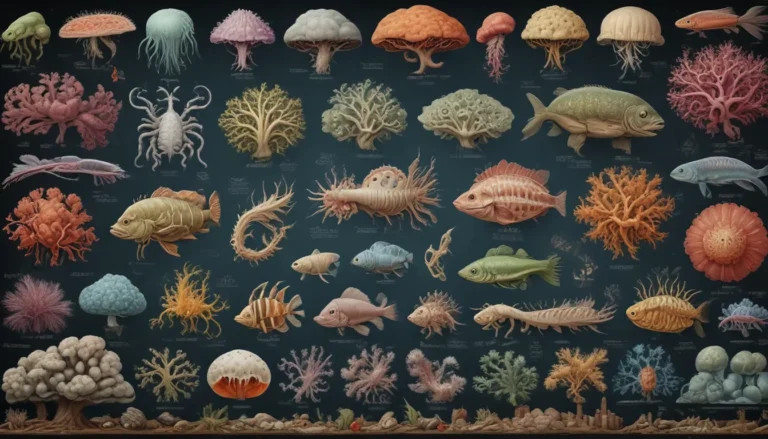A Note About Images: The images used in our articles are for illustration purposes only and may not exactly match the content. They are meant to engage readers, but the text should be relied upon for accurate information.
The human respiratory system is a marvel of biological engineering that keeps us breathing and thriving. From the intricate network of airways to the vital role of the lungs, every component works together seamlessly to supply oxygen to our cells and remove carbon dioxide. Whether you have a background in biology or simply a curious mind, delving into the fascinating facts about the respiratory system will deepen your appreciation for the complexities of our bodies.
Key Takeaways:
- The human respiratory system comprises essential organs like the nose, lungs, and diaphragm, working in harmony to ensure our survival.
- Smoking can harm the respiratory system, while regular exercise can strengthen it, promoting better oxygen intake and overall health.
Exploring the Components of the Respiratory System
The human respiratory system is a complex network of organs that work together to facilitate the process of respiration. From the nose to the lungs, each organ plays a vital role in ensuring the smooth flow of air in and out of our bodies.
The Remarkable Efficiency of the Lungs
One astonishing fact about the lungs is their vast surface area, roughly equivalent to that of a tennis court. This expansive area allows for optimal absorption of oxygen and efficient removal of carbon dioxide with every breath we take.
Unveiling the Diaphragm’s Role in Breathing
The diaphragm, a dome-shaped muscle located beneath the lungs, is the primary muscle responsible for the breathing process. It contracts and relaxes to create changes in lung volume, enabling the intake and expulsion of air.
Decoding the Control of Breathing by the Brain
Breathing is a vital function regulated by the respiratory center in the brainstem. This center receives signals from the body, adjusting the depth and rate of breathing to maintain optimal levels of oxygen and carbon dioxide.
Respiratory System’s Contribution to Vocalization
Beyond gas exchange, the respiratory system plays a key role in vocalization. The passage of air through the vocal cords in the larynx enables us to produce a diverse range of sounds and communicate effectively through speech.
Uncovering the Mucociliary Escalator’s Defense Mechanism
Equipped with a unique defense mechanism, the respiratory system employs the mucociliary escalator. Tiny cilia line the respiratory tract, constantly moving mucus and trapped particles away from the lungs, keeping the airways clear and healthy.
The Impact of Smoking on the Respiratory System
Smoking remains a significant risk factor for respiratory diseases like chronic bronchitis and lung cancer. The toxins in cigarette smoke can impair the function of cilia, leading to mucus buildup and an increased susceptibility to lung infections.
Enhancing Respiratory Health Through Exercise
Engaging in regular exercise offers numerous benefits for the respiratory system. It strengthens respiratory muscles, enhances lung function, and improves oxygen uptake efficiency, promoting optimal respiratory health.
Conclusion
The human respiratory system is a remarkable asset that sustains our lives through the delivery of oxygen and the removal of carbon dioxide. Understanding the intricate workings of this system allows us to appreciate its complexity and efficiency. By learning about captivating facts such as the vast surface area of the lungs, the role of the diaphragm, and the importance of respiratory hygiene, we can nurture and maintain our respiratory health for overall well-being.
FAQs
- How many breaths do we take in a day?
-
On average, a person takes around 20,000 breaths per day.
-
What is the main function of the diaphragm?
-
The diaphragm is the primary muscle responsible for the inhalation and exhalation process.
-
What is the purpose of cilia in our respiratory system?
-
Cilia act as small hair-like structures that filter out dust, pollutants, and bacteria, protecting the lungs from harmful particles.
-
How does the respiratory system adapt to high altitudes?
-
At higher altitudes, the respiratory system increases the production of red blood cells to transport more oxygen.
-
What are some ways to maintain a healthy respiratory system?
- Maintaining a healthy respiratory system involves practicing good hygiene, avoiding smoking, engaging in regular exercise, and ensuring proper ventilation.
The enigmatic wonders of the respiratory system beckon us to delve deeper into its mysteries. From the intricate alveolar ducts to the microscopic defenders known as alveolar macrophages, each element holds a unique story waiting to be uncovered. Embrace the marvels of the respiratory system and revel in the awe-inspiring complexities that make breathing effortless.
Our commitment to delivering informative and engaging content drives us to uphold the highest standards of accuracy and reliability. Each fascinating fact shared on our platform is contributed by individuals like you, ensuring a diverse range of insights and knowledge. With meticulous review by our dedicated editors, we guarantee the authenticity and credibility of the information we provide. Trust in our dedication to quality as you embark on a journey of exploration and learning with us.






